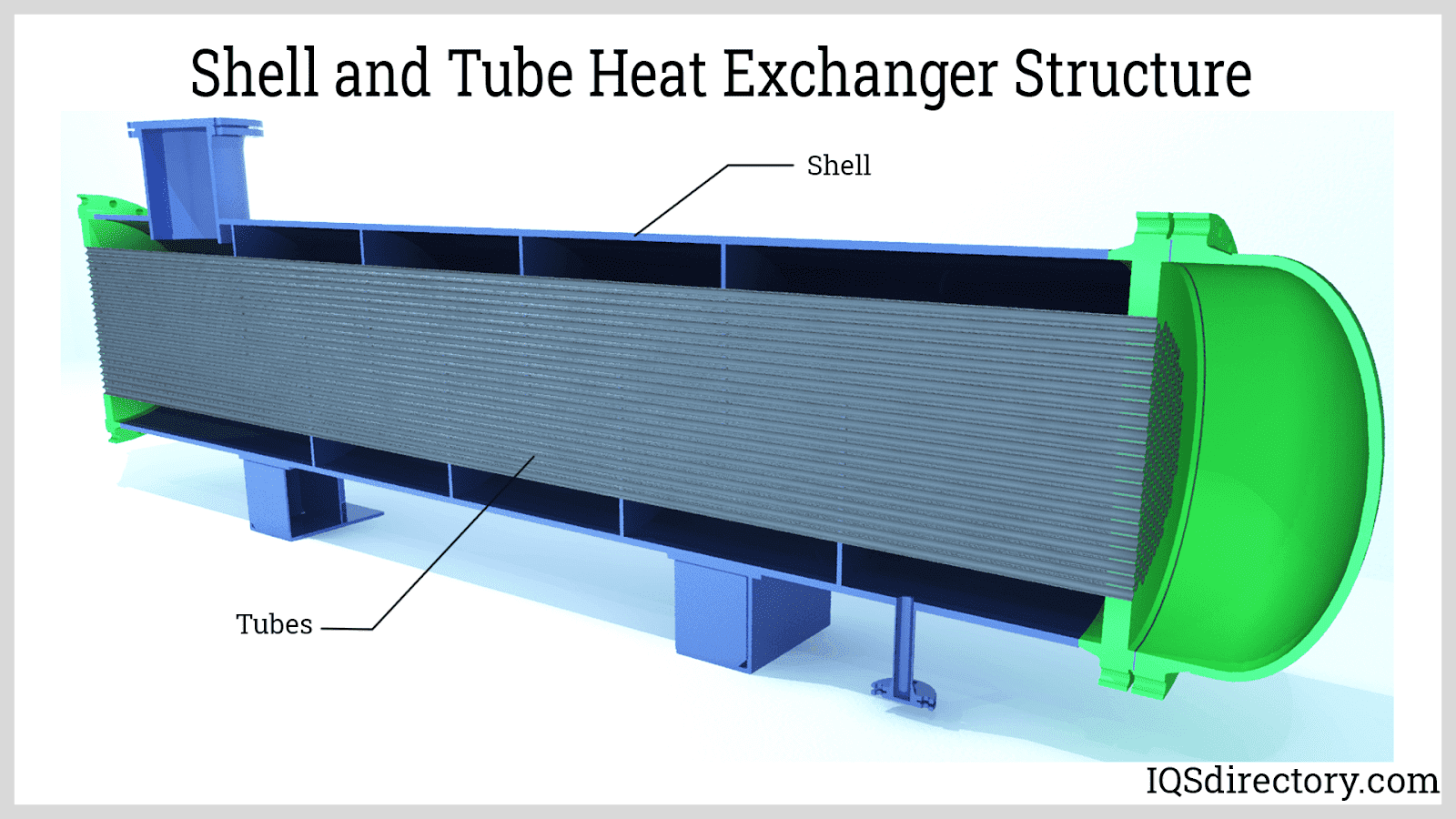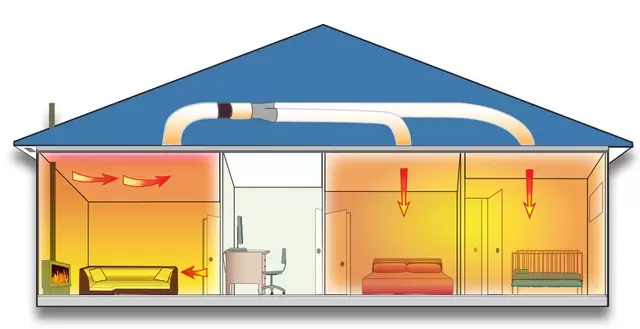The Function of Heat Transfer Equipments in Sustainable Power Solutions for the Future
Heat transfer systems are important in the pursuit for lasting energy solutions. They enhance thermal energy management, enhancing the performance of renewable technologies. By utilizing systems like convection, radiation, and conduction, these systems reduce power losses. Their function in solar thermal and geothermal applications is particularly considerable. As developments emerge, the capacity for more developments elevates important inquiries concerning future energy strategies. What developments will form the landscape of lasting power?
Understanding Heat Transfer Solutions

The Value of Thermal Power Management
Reliable thermal power administration is necessary for making best use of energy efficiency and reducing waste in numerous systems. By regulating temperature and maximizing Heat transfer procedures, organizations can considerably reduce energy consumption and functional prices. Reliable administration involves the implementation of sophisticated innovations and practices that keep track of and manage thermal conditions within systems, guaranteeing that power resources are used successfully. On top of that, proper thermal energy management adds to decreasing greenhouse gas discharges, lining up with global sustainability objectives. It also boosts system integrity and performance, leading to improved item quality and longer devices life expectancy. Eventually, focusing on thermal energy management is an essential step towards developing more lasting energy services and cultivating an accountable strategy to power consumption in industrial and property contexts.
Applications of Heat Transfer in Renewable Power
While various sustainable energy sources guarantee sustainability, the efficient application of Heat transfer plays a vital role in their performance. In wind power systems, Heat transfer is made use of for wind turbine part air conditioning, enhancing performance and long life. Geothermal power relies upon reliable Heat exchange in between the planet's subsurface and the fluid distributing in the system, making the most of energy extraction. Biomass energy procedures also profit from Heat transfer, as it aids in converting organic products right into useful fuel through pyrolysis and gasification. In addition, in hydropower, keeping ideal temperature levels in reservoirs can improve power outcome. Each of these applications demonstrates the essential value of Heat transfer systems in improving renewable resource modern technologies, eventually adding to a much more sustainable power future.
Enhancing Solar Thermal Power Effectiveness
As solar thermal power systems continue to advance, boosting their effectiveness has actually become crucial for taking full advantage of energy output. Advances in Heat transfer technologies, such as improved thermal storage space materials and cutting-edge Heat exchangers, play a considerable duty in improving efficiency. By using sophisticated materials that have remarkable thermal conductivity, systems can move and record Heat better. In addition, incorporating monitoring systems that follow the sunlight's path guarantees that collection agencies receive perfect solar exposure throughout the day. Using nanotechnology in solar absorbers can better boost energy absorption prices. Including automatic control systems helps take care of and control temperature levels energy distribution efficiently, leading to reduced losses and improved overall system performance. These enhancements lead the way for more lasting solar thermal energy options in the future.
Geothermal Home Heating: A Lasting Solution
Geothermal home heating presents a feasible option for sustainable power, providing significant ecological benefits with decreased greenhouse gas emissions. Its effectiveness and cost-effectiveness make it an eye-catching choice to typical home heating systems. Obstacles associated to implementation needs to be resolved to maximize its possible effect.
Environmental Advantages of Geothermal
Although traditional home heating approaches add considerably to greenhouse gas exhausts, geothermal heating provides a compelling alternative that reduces ecological effect. By harnessing the Planet's internal Heat, geothermal systems make use of an eco-friendly energy resource, noticeably minimizing dependence on nonrenewable fuel sources. This approach creates marginal carbon discharges, making it a cleaner option for property and business home heating. Furthermore, geothermal systems advertise power performance, as they require much less energy compared to conventional furnace. DVS Heat Transfer Systems. The usage of geothermal power also aids in reducing air contamination, improving neighborhood air quality and public health. As a lasting solution, geothermal home heating supports climate adjustment reduction efforts, placing itself as a vital element in the change towards a greener future
Effectiveness and Cost-Effectiveness
Just how does geothermal home heating gauge up in regards to performance and cost-effectiveness compared to conventional heater? Geothermal home heating shows exceptional efficiency, often accomplishing a coefficient of efficiency (COP) of 3 to 5, suggesting it creates three to five systems of Find Out More Heat for every single unit of electricity taken in. This performance converts right into reduced operating expense, specifically in regions with steady geothermal sources. Initial setup expenses can be greater than traditional systems; nevertheless, lasting savings on energy costs and lowered maintenance expenses can balance out these in advance financial investments. In addition, numerous federal governments incentivize geothermal systems with refunds and tax credit scores, enhancing their cost-effectiveness. In general, geothermal heating arises as a economically sensible and lasting option to even more traditional heating services.
Application Obstacles and Solutions
Many difficulties can hamper the prevalent implementation of geothermal home heating systems, in spite of their clear benefits as a lasting energy solution. High preliminary installation costs commonly discourage financiers and house owners, making funding a significant barrier. Furthermore, the geographical limitations of appropriate geothermal websites restrict click here to read accessibility in specific areas. Neighborhood laws and permitting processes can also make complex task advancement, causing hold-ups. Moreover, public understanding and understanding of geothermal systems continue to be reduced, preventing acceptance. To deal with these obstacles, targeted education and learning projects can boost public expertise, while government rewards could minimize economic concerns. Working together with local authorities to streamline laws may facilitate smoother job approvals, ultimately promoting the adoption of geothermal heating as a feasible, sustainable energy alternative.
Developments in Heat Transfer Technologies
Developments in Heat transfer innovations play a crucial function in improving energy performance and sustainability. Advanced Heat exchangers and stage modification materials are at the center of these advancements, offering substantial enhancements in thermal administration. These innovations not just enhance power use yet additionally add to decreasing environmental influence in different applications.
Advanced Heat Exchangers
Advanced Heat exchangers play an essential function in improving energy efficiency across different applications in lasting energy solutions. These devices promote the transfer of Heat in between two or more liquids, considerably reducing energy consumption in procedures such as industrial home heating, air conditioning, and power generation. Technologies in products and layout, such as the usage of nanofluids and small arrangements, have actually brought about enhanced thermal performance and lowered dimension needs. Additionally, developments in digital monitoring and control systems enable optimized procedure, additional boosting efficiency. By reducing waste Heat and making the most of energy recovery, progressed Heat exchangers contribute to decrease carbon footprints and sustain the change towards eco-friendly innovations. Their continued advancement is important for attaining international energy sustainability objectives.
Stage Change Materials
The combination of phase adjustment materials (PCMs) into Heat transfer innovations stands for a considerable innovation in power management and efficiency. PCMs absorb and release thermal power throughout their phase adjustments, enabling reliable temperature level regulation in building materials and energy systems. By saving excess Heat throughout optimal durations and releasing it when demand increases, he has a good point PCMs contribute to pack changing and energy conservation - DVS Heat Transfer Systems. This ability enhances the efficiency of sustainable power systems, particularly in solar thermal applications. Additionally, PCMs can improve the thermal comfort of interior atmospheres, decreasing dependence on traditional home heating and cooling down approaches. As developments in PCM solutions continue to emerge, their function in sustainable energy remedies is positioned to grow, offering encouraging avenues for future research and application

Future Prospects for Heat Transfer in Lasting Energy
As the need for lasting power solutions proceeds to climb, the role of Heat transfer systems is coming to be progressively vital fit future modern technologies. Innovations in layouts and materials are anticipated to enhance performance in Heat transfer, decreasing energy losses in numerous applications. The combination of advanced thermal storage space systems, such as phase change products and thermochemical storage space, will enable much better monitoring of energy resources. Research into nanofluids and biomimetic Heat exchangers might further optimize thermal efficiency. The adoption of smart modern technologies will enable for real-time tracking and adaptive control of Heat transfer processes. These innovations are poised to substantially add to the general effectiveness and sustainability of power systems, leading the way for a more energy-efficient future.
Often Asked Concerns
Just How Can Individuals Carry Out Heat Transfer Solution at Home?

People can apply Heat transfer systems at home by mounting energy-efficient home appliances, using radiant heat, and enhancing insulation. These steps improve energy performance, decrease costs, and advertise lasting practices in property environments.

What Are the Expenses Associated With Installing Heat Transfer Solutions?
The prices connected with installing Heat transfer systems differ extensively, usually including equipment, installation labor, and maintenance. Elements such as system kind, home dimension, and local regulations significantly influence the total expense entailed.
Exist Government Incentives for Heat Transfer System Installations?
Federal government incentives for Heat transfer system setups vary by region and can include tax refunds, credits, and grants. These monetary benefits aim to urge adoption, ultimately promoting energy effectiveness and lowering environmental influence within areas.
Exactly How Do Heat Transfer Systems Influence Energy Expenses?
Heat transfer systems especially affect power expenses by optimizing power efficiency. By enhancing the transfer of Heat, these systems lower energy usage, causing reduced utility expenses and producing a more sustainable strategy to energy administration.
What Upkeep Is Needed for Heat Transfer Systems?
Maintenance for Heat transfer systems includes routine inspections, cleaning of parts, checking fluid degrees, ensuring appropriate insulation, and changing used components. These jobs assist maintain efficiency, avoid break downs, and prolong the system's functional life expectancy.
These systems help with the movement of thermal power from one medium to an additional, enabling the transfer of Heat for air conditioning, power, or heating generation purposes. Geothermal energy depends on reliable Heat exchange between the earth's subsurface and the liquid flowing in the system, optimizing power removal. Additionally, geothermal systems advertise power effectiveness, as they require much less energy contrasted to traditional home heating systems. Advanced Heat exchangers play an important duty in improving energy effectiveness throughout different applications in sustainable energy remedies. Heat transfer systems especially influence energy costs by optimizing power effectiveness.